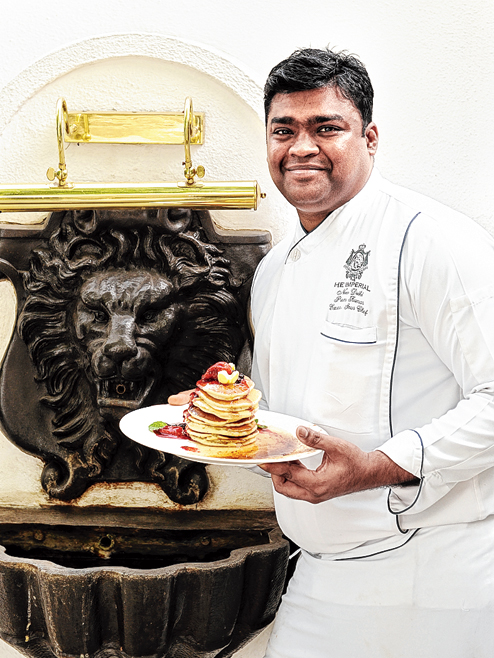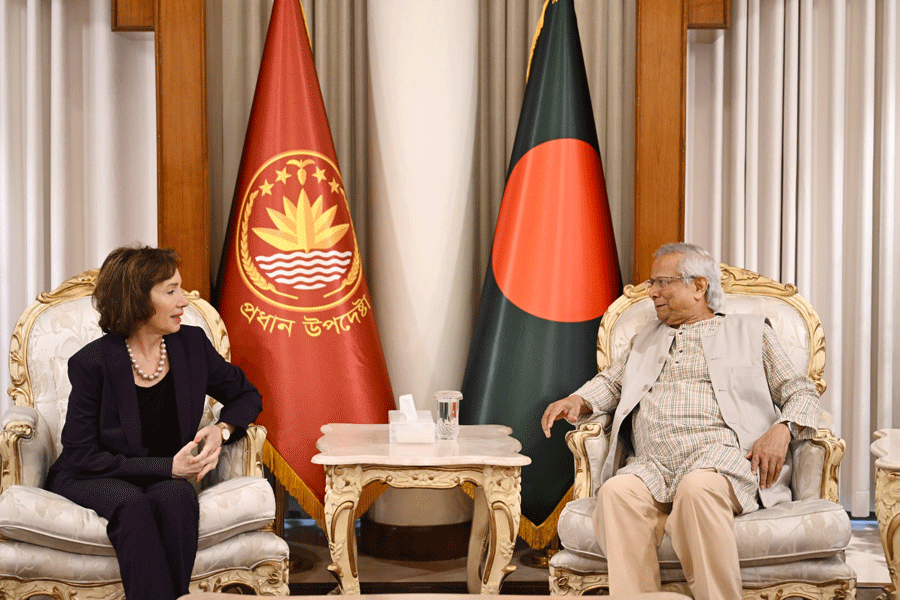Heavily-loaded pizzas, delicious kheer, creamy risottos, tempting laddus and glassfuls of soothing buttermilk are the stuff of comfort food right? Here’s the twist: a host of Indian dishes are now being tossed up with not ‘regular’ ingredients but humble millets. Yes, those often forgotten tiny grains like ragi, jowar and bajra.


Photos: Jagan Negi
Once considered a poor man’s staple, millets are now finding their way into households across the country. With a surge in healthy eating habits, an increasing number of people are reaching out for wholesome millets. A string of restaurants have also opened their doors in big cities offering millet-based menus.



“Forgotten grains like ragi (finger millet), jowar (sorghum) and bajra (pearl millet) are being rediscovered,” says Gaurav Kumar Mathur, director culinaire, Select Group of Hotels. “With a growing awareness about millets, people are reviving traditional recipes,” Mathur adds.
Celebrity chef Kunal Kapur agrees: “After molecular gastronomy and the organic revolution, today it’s all about cooking with millets.” At Diya, his restaurant in Gurgaon, Kapur offers a healthy millet risotto, sprouted millets and a millet khichda cooked with mutton and mushrooms — dishes that are packed with nutrients.
“Millet flour is considered a healthy substitute for Indian and Western breads,” says Prem Kumar Pogakula, executive sous chef at The Imperial, New Delhi. “In the south and western India, millets are still a part of the staple diet,” he says.
In Karnataka, he says, popular dishes include millet pizzas and ragi mudde while rural Rajasthan lives on jowar rotis. In Telangana, millet flour soup — that’s similar to rice congee — is regularly consumed in summer. He adds: “One can experiment extensively with these extremely versatile grains.” His favourite dishes include sweet millet flour pancakes, millet and caramel banana cakes and ragi flour and coconut idlis.

.jpg)
With no dearth of delicious millet recipes it’s no wonder that new-age restaurants have turned the spotlight on these grains.
So, Millets of Mewar in Udaipur, Rajasthan, offers millet bruschetta, aloo tikki, muesli vegan, multigrain wraps and much more. The dishes are made with millets like ragi, jowar, bajra and little millet (samvat). “My business partner and I wanted to re-introduce local varieties of nutritious millets that have disappeared from our diets,” says Manoj Prajapat. “On our travels we pick up new and authentic regional recipes for our menus,” he says.


to conjure up delicious aloo tikkis (top) and bruschetta (above)
Cut to Aahar Kuteer in Hyderabad, a restaurant that promotes the natural taste of millets. “There’s no need to add a twist to the dishes as the grains taste best when prepared without playing too much with them,” says Sridhar Gogineni, the owner of the restaurant. “We don’t even use a pressure cooker so that we can keep everything as natural as we can,” he says. Popular dishes at the restaurant include Sama (barnyard millet) kheer, ragi sankati (ragi flour), arika pulihora (a sour rice preparation made of kodo millet) and Ambali (a refreshing drink made of finger millet).
The Mahamudra Restaurant run by Isha Life Foundation in Chennai too offers a gamut of millet-only dishes that include ragi roti (finger millet) served with Kaalu (kidney beans) and Saaru (curry), Kanji (porridge) of ragi and Kambu (pearl millet) served with lentil vada and keerai (spinach) Poriyal (stir fry).


“Processed grains offer very little by the way of nutrition,” says Meena Thenappan, R&D head, Isha Life, who is responsible for reinventing and reviving recipes at the restaurant. “Substituting them with brown rice, whole wheat flour and millets is a very healthy option,” says Thenappan.
Then there’s Vaathsalya Millet Cafe in Bangalore that specialises in millet dishes cooked in a homely way. It offers everything from ragi laddus that are sweetened with jaggery and garnished with fresh coconut to an all-millet thali. Says Jyothi Mahipal, the owner of the café, “We also prepare curries made with Amaranth leaves, capsicum and brinjal, a yogurt salad with chow-chow and saame rice or rice made with little millet, and rajmudi which is a popular variety of brown rice from Mysore.”

For those with a sweet tooth there’s always foxtail, kodo and proso millet payasam. “A different variety of payasam is prepared every day,” says Mahipal. Those looking for a light snack can opt for ragi pop, which is the ragi version of popcorn mixed with a few spices. “This can be had with aralu (popped rice) buttermilk,” she adds. There’s also chocolate and herbal ragi malt made with green gram if you are open to creative dishes.
Rajeev Sharma, F&B director, Samode Hotels & Resorts, Rajasthan, is also a millets fan. He says: “We use millets as an alternative to quinoa in salads.” He has also been conjuring up bajra and arbi ke kebab, bajra cutlets, minted millet and spinach soup. Other popular dishes are bajre ki khichdi, bajre ki roti, bajre ka churma. He recommends refreshing local drink called chach raabdi that’s buttermilk mixed with soaked and pounded maize/millets, seasoned with black salt/salt.
Nutritionists and dietitians too are rooting for these grains. “Millets are a good alternative for people who are gluten intolerant,” says nutritionist Dr Shikha Sharma. “They have high natural fibre and, thus, are good as cereals for weight loss. They are not only a great source of starch, protein, fibre and amino acids, but also taste good and are easy to digest.”
.jpg)

According to dietitian Ishi Khosla, millets are known for some unique health benefits that are quite distinct from the staples like wheat, rice and corn. “Millets are a potentially important source of antioxidants like phenolics, tannins, and phytates especially in jowar,” says Khosla.
Dietary phytates are known to prevent a variety of cancers, kidney stones and coronary heart disease, says Khosla. “The high proportion of anti-nutrients like phytates and tannins in millets interfere with the absorption of minerals. So, soaking, fermentation, germination of millets enhances bioavailability (absorption) of these minerals. Overall, millets are highly digestible, high-nutrient, hypo-allergic grains,” says Khosla.
Healthy, light and wholesome, millets pack in a healthful punch. So, it’s time to say hello to the tiny but power-packed grains!










